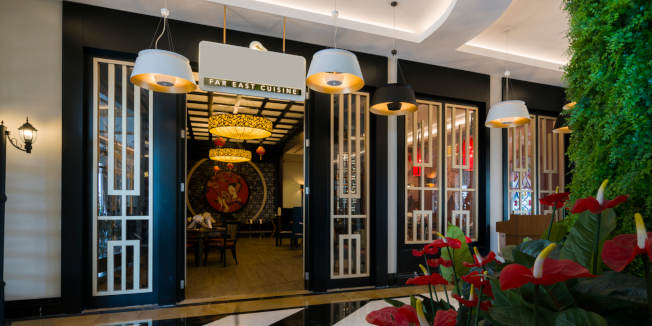
Maximize your local presence through strategic location management.

In June, Google announced that it would allow businesses to post a variety of secondary hours on their Google My Business (GMB) listings. For the first time, businesses were able to define and post special hours—such as grocery stores with dedicated senior-only shopping times or restaurants offering drive-through hours—separately from their standard operating hours.
But this update has inadvertently created a new issue. Many businesses are now using this new function to avoid proper setup of their nested locations. Rather than creating a unique listing for businesses which share the same address (e.g. an ATM within a bank), GMB managers are incorrectly using secondary hours to list separate businesses.
There are instances such as book stores listing their internal cafes through secondary hours, while declining to create a separate listing for the cafe itself. While this approach isn’t outright wrong, it means businesses are losing the advantage of having a separate listing with a different main category. Listings for nested locations, when managed properly, are an excellent way to increase overall exposure.
There are tangible benefits to granting a nested business its own separate GMB listing instead of using secondary hours. Fortunately, the criteria are fairly clear-cut: secondary hours are best used when a single business has unique services that are available outside of standard operating hours, wheres as nested locations are intended for multiple businesses which share an address.

The simplest way to know if a nested business requires its own GMB listing is if it has a separate business category than the business it is nested inside. A hotel restaurant, for instance, would be categorized under “restaurant” or other similar categories, and would have no overlap with the hospitality categories a hotel would use. It is these separate categories that best indicate when businesses should be nested. These same categories also grant each business a multitude of benefits when they have their own unique listings.
The biggest benefit of having a separate listing is, very simply, that customers will be able to find these nested businesses. If you list your hotel restaurant only through secondary hours of your hotel, the restaurant will not show up for most searches. If a Google user searches for “restaurant near me” and the restaurant is sharing its listing with a hotel, the restaurant will most likely not appear in that user’s search results. In fact, because the restaurant is incorrectly included in the “hotel” category, it may not appear in any searches with relevant keywords. Even branded searches for the restaurant’s exact business name may not turn up any results because the restaurant’s existence is hidden behind the hotel that listed it as nothing but secondary hours.

In addition, GMB allows for many unique features on business listing, depending on their category. Menus, delivery URLs, attributes, and other features are unavailable to hotels but would be greatly beneficial for a restaurant. Pharmacies within groceries stores also have their own suite of unique features they should utilize, such as appointment booking URLs or telehealth conferencing links. These features would be unavailable to any nested business listed by secondary hours alone.
The benefits of having a nested location rather than secondary hours are very similar to a business having a GMB listing in general. You would be hard pressed to find an example of a business that would prefer not to be listed online. Visibility through free SEO offers its own benefits; benefits that only increase as a business lists its own photos, reviews, and other unique attributes. If the nested business is owned by a unique owner, they wouldn’t want to put their business’s information (and reputation) in somebody else’s hands. If the nested business is owned by the same person, then they still wouldn’t want to lose all the benefits of having multiple listings online and multiple chances to be found by users.
Through separate listings, businesses are able to optimize for different user queries, explore GMB insights for each listing separately, and enjoy more opportunities to rank on searches. A nested location with a separate listing is almost always a better option than secondary hours. Secondary hours should be reserved for those few cases of a single business having unique hours for a very specific secondary service.
Subscribe to our monthly newsletter.
The proviso with nested locations is that you will then have an additional online listing that you need to manage. If your business lacks the resources or expertise to properly manage those additional listings, you may be tempted to use secondary hours instead. But then you’d be passing up the many benefits a nested location offers (as we explored in this post about nested ATMs).
Don’t let the time-consuming aspect of nested locations stop you from setting up your online presence properly. That is exactly why our Local Presence Management team exists! Get in touch and we’ll take care of the heavy lifting to help your nested locations realize their full potential—leaving your teams free to focus on doing what you do best.
Maximize your local presence through strategic location management.
Maximize your local presence through strategic location management.
Subscribe to our monthly newsletter.